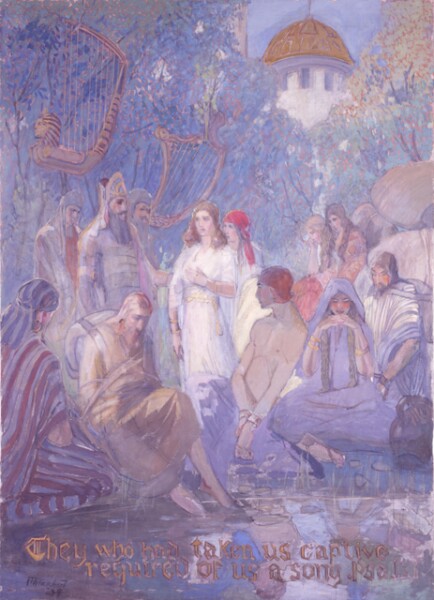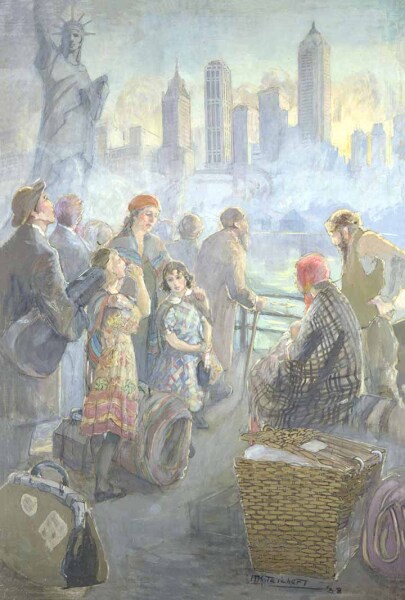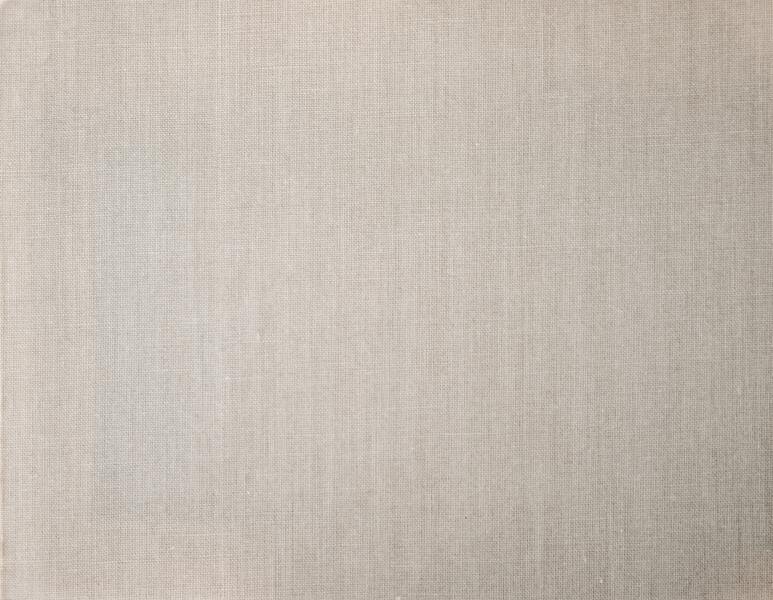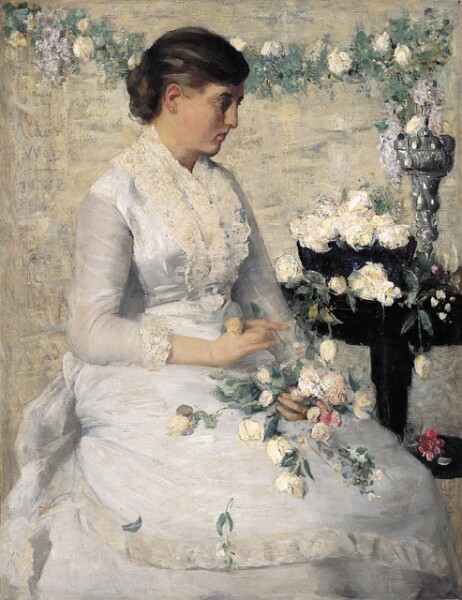FROM THE VAULT GUIDE
From the Vault: American Art Highlights and Recent Acquisitions features some of the most beloved works from the MOA permanent collection. The paintings and sculpture featured here include timeless classics, exciting new acquisitions, and compelling combinations of works that have never been showcased together. 12 artists are represented in this gallery space. As you view their art, consider what it means to be inspired. What may have inspired these artists to create either a specific piece, or art in general? What inspires you? Use the activities below to answer these questions!
Jump on in!

To get started, take a walk through the gallery and imagine yourself inside the paintings.
- Find a place where the temperature would be cold.
- Find a place where the temperature would be hot.
- Which scene would smell good?
- Which scene would not smell good?
- Discover a scene that would sound loud.
- Discover a scene that would sound quiet.
Compare and Contrast
Find the Minerva Teichert paintings near the exhibition entrance. In 1938, Minerva Teichert's son, Herman, was serving in Germany as a missionary for the Church of Jesus Christ of Latter-Day Saints. Disturbed by the mistreatment of the Jews at that time, he wrote to his mother, outlining their distress. In response to his letter, Teichert painted three large works: Immigrants to New York City (Jewish Immigrants), They Who Had Taken Us Captive Required of Us a Song, and Queen Esther. Ask yourself: Why would Teichert have chosen these three subjects in response to her son's letter?
Compare and Contrast these three paintings: What are the similarities and differences?
Minding Materials
Find The Family by Elizabeth Catlett, the only sculpture in the exhibition. After viewing the sculpture, as yourself how different sculpting materials would impact the message of this piece. Consider materials such as marble, rusted metal, fabric, plastic, and glass. What other materials might one use and what ideas do they communicate?
Framing the Work

Find this painting by Ernie Barnes near the back of the exhibition. Barnes' life experiences inspired not only his paintings, but also his frames. His weathered wood frames, like the one used for In the Beginning, reference his father, who took care of the family's wood fence until he suffered a stroke. Barnes wrote, "I placed a painting against the fence and stood away and had a look. I was startled at the marriage between the old wood fence and the painting. It was perfect. In tribute, Daddy's fence would hug all my paintings in a prestigious New York gallery. That would have made him smile."
As you walk around the exhibition, examine the variety of frames. Notice how they not only set apart and protect, but enhance each piece.
Haiku
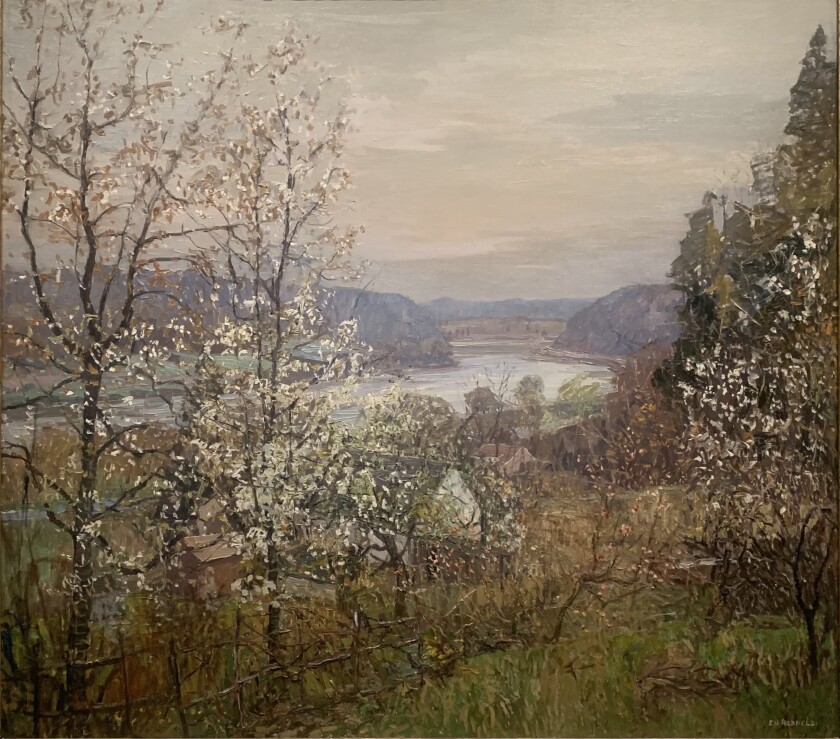
You may have heard of the Japanese Haiku, an unrhymed three-lined poem with five syllables in the first line, seven in the second, and five in the final line. Did you know that most Haikus are inspired by nature or a season? When you get home, try writing your own Haiku about the moment depicted in The Valley by Edward Redfield.
Still Life Sketch
A still life is an image featuring carefully arranged inanimate objects. A still life can include flowers, fruits, dishes, jewelry, and other common household items. J. Alden Weir painted Silver Chalice with Roses as a birthday present for his then fiancee.
View Silver Chalice with Roses and notice the similar display in Flora (Carrie Mansfield Weir), also by J. Alden Weir. If you were to paint a still life, what are some objects you would include?
Character Discussion

More than 50 figures are featured in this exhibition. Pick one and learn more about them based on clues within the work.
- Which figure did you choose?
- How old do you think they are?
- What is their social status? How can you tell?
- What types of things do you think are important to them?
- Based on their body language and facial expression, how are they feeling right now?
- What do they like to do for fun?
Before and After

Artworks often depict a specific moment taken from a larger story. We may not always see what happens leading up to the instant depicted, or what will happen after, but we can look for clues in the artwork.
Look at Two Boxers and Referee by Mahonri M. Young and discuss what you think occurred before this moment and what will happen next. Consider not only the seconds before and after this scene, but the hours, days, and even years.
